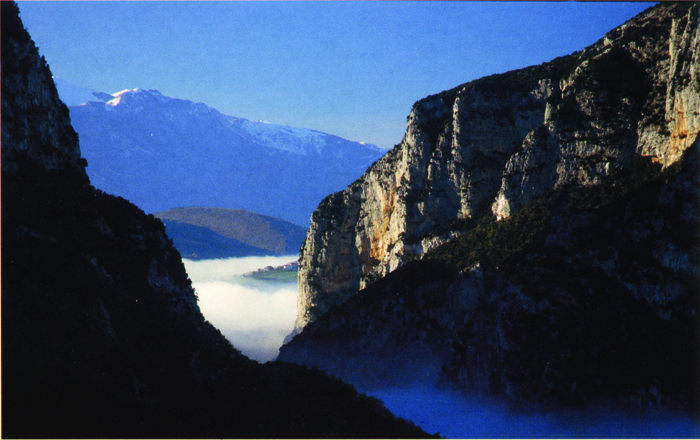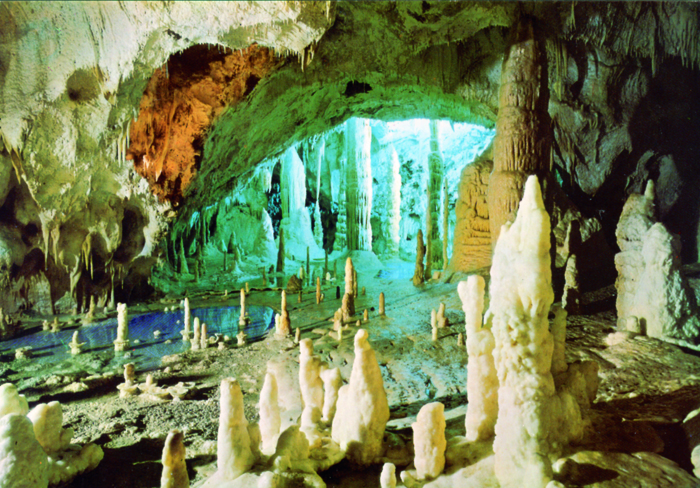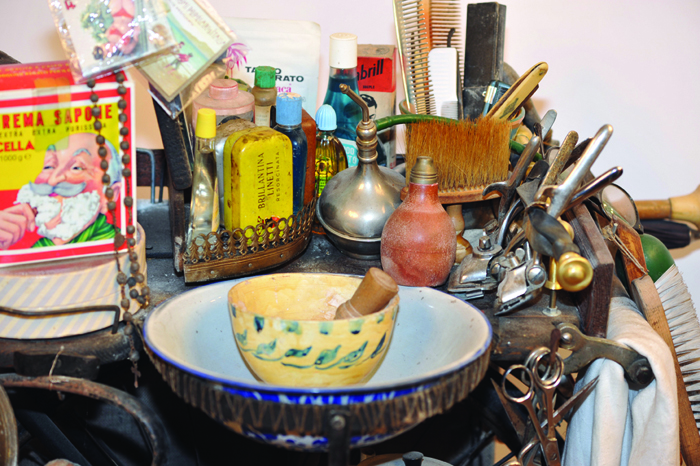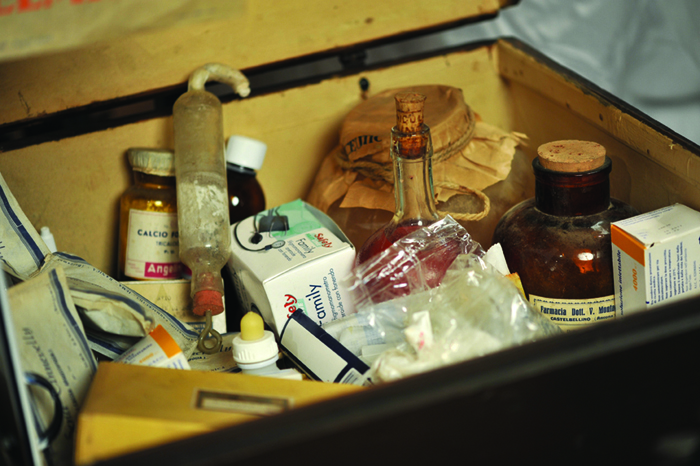Lorenza Bacino visits the Esini Hills, a diverse and undiscovered part of Le Marche which is home to the world renowned Frasassi Caves…
Visiting the Frasassi Caves in the heart of the Gola della Rossa National Park has long been on my ‘to do’ list. Wild, rugged, untamed and unpredictable, the 10,000 hectares of park are like a mini Scotland of Italy.
The caves are at the heart of this landscape and are the biggest in Europe. Speleologists from all over the world come to study the hidden, uncontaminated environment. Dating from between one and two million years ago, the caves were only discovered in 1971 by a group of young speleologists (cave enthusiasts). While the group was exploring the area, they saw blades of grass blowing vigorously at the opening of a crack in the rock. They began dropping rocks down the crack and counting the seconds till they hit the bottom. Six, seven seconds passed before the rocks reached their resting place.
Little could they have known then that they had discovered such an extensive network of underground passageways, an enchanting subterranean world revealing giant stalactites and stalagmites. Millions of years of river and rain water have worn through the soft, porous rock combining with the mineral-rich sulphur water from way below and producing the corrosive mixture which has formed the caves.
The first cave within this 30km complex (five rooms are open to the public) is called the Abisso Ancona. It’s 240m high, 165m long and 110m wide. That equals one million cubic metres. I catch my breath as I enter, even though I know the space is large enough to fit Milan’s huge cathedral. The sheer size of the cavern means any sense of perspective is lost.
Crystal formations like silk curtains blowing in the wind adorn the walls. Strange and magical formations play havoc with your imagination. Is it a goblin or a witch over there in the shadows? Huge white iced wedding cakes twinkle in the artificial light, and beautiful tubular formations resembling church organs glisten in the penumbra. Pristine lakes lie beneath the surface. I imagine how heart-stopping it must have been for those young speleologists who came down the ladder for the first time with only a torch to light the way.
The Frasassi Caves
The Frasassi Caves are the jewel in the crown of these craggy hills, home to the golden eagle, the peregrine falcon, the goshawk, wild boars, deer and even wolves. But there are other gems here too. Myriad ancient abbeys and medieval towns are scattered about the hills. And you can hike, rock climb, bike, walk, canoe, whilst enjoying a richness and diversity of flora and fauna comparable only to the richness of the food and wine you’ll find in the surrounding borghi (medieval walled towns). You may even stumble upon a hidden Giotto if you look hard enough.
The Colli Esini encompass the central area around Jesi, westward to the foothills of the Apennines, northwards to the Misa River valley and south to the Musone River valley. These hills are rather less densely populated than other regions in Italy and cover about 10,000 square kilometres.
The locals say it’s an under-visited and under-appreciated area. I don’t see why it should be. Each ‘borgo’ boasts its own theatre, its own museum and an enviable cultural life many villages in England can only dream of. In the coming months there will be a wine festival to celebrate (Verdicchio) and music to enjoy. In fact, 20,000 hectares of its rich clay soil is dedicated to wine production.
I feel I am a guest here, not a tourist. In the town of Staffolo, our group of two quickly expands to eight or ten, each person bursting to tell me more about the history of their home. The mayor appears and chats happily as she propels me around the cobbled streets to admire the local churches, the wine cellars and even a four-star spa hotel within the city walls.
Serra san Quirico
In Serra San Quirico, Derek Barnes is on hand to show me round. He’s been part of the tapestry of the community for the past decade. He retired here from England, and now runs a small B&B within the city walls with his wife. Serra San Quirico lies on the slopes of Monte Murano at the entrance to the Gola della Rossa Park. The old town is shaped like the hull of a great ship and clings precariously to the rock-face. It’s a labyrinth of small cobbled streets and you can walk along the illuminated medieval archways known as the copertelle, and enjoy views across the hills. The small Church of Santa Lucia is an unlikely 17th century Baroque extravaganza in the village – ‘Baroque on steroids’ laughs Derek.
Derek has thrown himself into every aspect of local life and enjoys its traditions, which are very much alive. He tells me how the village comes together to collect snails which are then cooked and shared with everyone. “Life is pretty perfect here,” he says. “I love the slow pace, and I love to go cycling, running and hiking too. Oh, and the view from our window is something I will never ever get tired of,” he smiles.
So stay a while and explore. Sample the wine and local food. Smell the aroma of fresh bread emanating from the local shops each day. Stroll along the cobbled streets of the villages and small towns and pop your head into a small church or theatre. Talk to the café and wine bar owners. They are a font of local knowledge and folklore about the area and language is no barrier.




